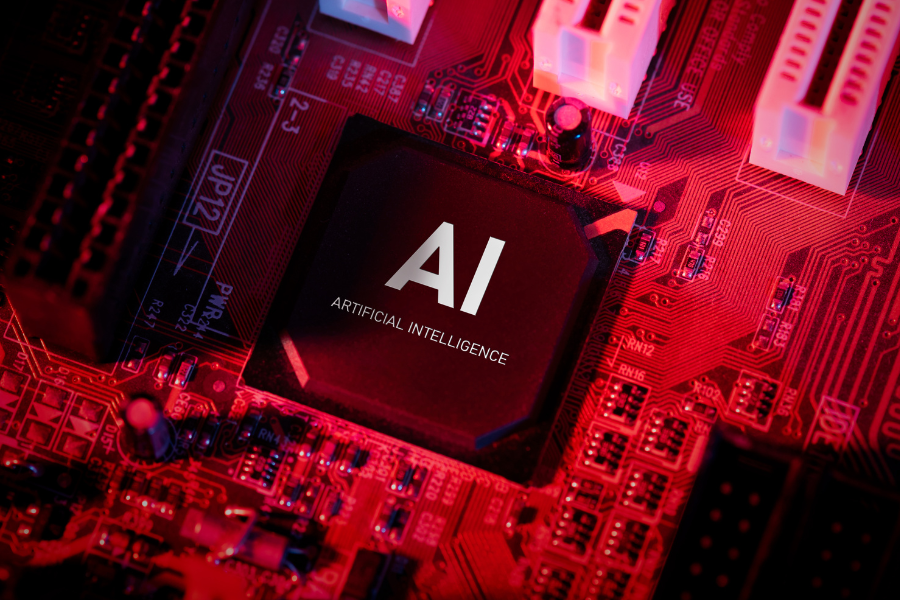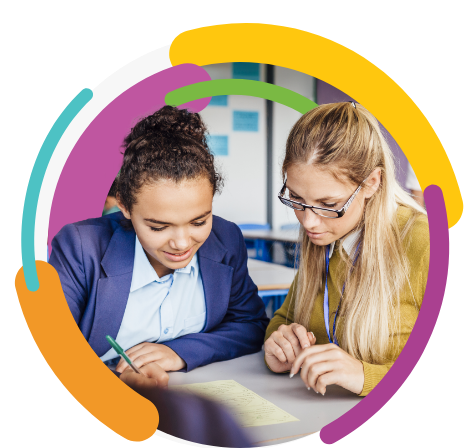
Artificial intelligence (AI) is a major part of today’s cultural conversation. But what exactly is AI? According to a report by the Consortium for School Networking (CoSN), “[AI] functions in a manner similar to humans in that it can sense, learn, reason, and then take actions. However, unlike humans, AI is comprised of algorithms, rules, and data sets that operate within a specific domain.”
You’ve probably used AI for years without realizing it. When you search for something on Google or ask Siri, Alexa, or any other virtual assistant a question, you’re using AI. But as technology rapidly evolves, it feels like more AI programs pop up every day.
The evolution of AI is changing the game for K-12 schools, giving teachers and administrators new tools to manage daily tasks more efficiently. In this blog post, we’ll cover the benefits of AI for K-12 schools as well as potential challenges and tips for creating a well-rounded AI policy.
AI for Classroom Teachers
There are many AI tools out there that can help teachers reduce hours spent after school preparing for the next day and free up time to focus on student outcomes and professional development. A study by McKinsey & Company found that “existing technology can help teachers reallocate 20 to 40 percent of their time to activities that support student learning.”
Here are some examples of AI tools that can benefit classroom teachers.
Lesson Planning
AI can streamline lesson planning and assist with the creation of supporting materials like writing prompts, handouts, project outlines, and more. McKinsey & Company estimates that AI technology can reduce time spent on preparation activities from 11 hours to six hours per week.
There are currently several tools on the market that support lesson planning. These include Education Copilot, Google Gemini, MagicSchool, and more.
Grading
Grading is another task that can take up significant time, causing teachers to work extensive hours outside of school. Tools like Gradescope and Essay Grader can speed up the grading process for a variety of assignment types including essays, worksheets, and exams.
AI for School Administrators
Not only can AI help teachers become more efficient, but it can save time for school administrators as well. Many schools have a small team of administrators, requiring each person to wear multiple hats. This can make it difficult to keep up with daily workloads. Here are some examples of AI tools that can help school administrators do more with the resources they have.
Marketing
Effective marketing is essential to a school’s success. But many schools only have the budget to hire one or two marketing professionals, if any at all. AI can help schools with limited resources enhance their marketing.
Graphic design tools like Canva offer AI features that make it easy for anyone to create social media images, event flyers, or presentations. Writing assistants like Grammarly and ChatGPT can help you craft blog posts, social media posts, and marketing emails faster, so you have more time to focus on your other responsibilities.
Administrative Tasks
AI can save time for school staff by automating many tedious administrative tasks. Here are a few examples.
- An AI chatbot can assist parents with questions, reducing call volume to the front office.
- Built-in, automated reporting features in tools like your student information system reduce manual work.
- A tool that sends automated alerts and reminders to parents reduces the need for paper notices that get lost in backpacks.
Challenges of AI
With any new technology comes its challenges. AI is rapidly evolving, which brings concern for ethics, privacy and security, and improving AI literacy. Understanding potential challenges is an important first step when implementing AI at your school.
Ethical Considerations
As AI becomes more popular, many are concerned that it will eliminate jobs. However, in their recent report CoSN said, “Though some narratives around AI leave teachers fearing for their jobs, both economists and education experts argue the opposite. The real potential for education lies in how AI augments what teachers and leaders do in schools, allowing them to be more adaptive.”
Plagiarism is another potential ethical concern. Training students, teachers, and staff on the appropriate use of AI is essential to avoid plagiarism. For example, rather than a student writing an essay without human involvement or an administrator creating a blog post with AI and publishing it without making any changes, use AI as a resource for brainstorming and generating ideas.
Privacy and Security
With new AI tools popping up every day, assessing the security of the programs your school uses is paramount. Some tools are built specifically for school environments with student privacy laws in mind, but others are less secure. Evaluating the privacy and security of AI tools on a case-by-case basis is a best practice for schools experimenting with AI.
AI Literacy
To avoid ethical and security-related problems, improving AI literacy among your teachers, administrators, and students is important. To help schools better frame the role of AI in K-12, researchers with the Association for the Advancement of Artificial Intelligence (AAAI) identified Five “Big Ideas” for AI in K-12.
- Perception: Computers perceive the world using sensors.
- Reasoning: AI systems maintain representations of the world and use them for reasoning.
- Learning: Computers can learn from data.
- Human Interaction: Making AI systems interact comfortably with humans is a substantial challenge for AI developers.
- Societal Impact: AI can impact society in both positive and negative ways.
Establishing an AI Policy
Now that you’ve considered possible challenges related to AI and tools that can save time for your teachers and administrators, it’s important to establish an AI policy for your school. Here are some steps to help you build one.
- Create guidelines for school personnel. What types of actions are teachers and administrators allowed to complete using AI? What is off-limits?
- Decide if students are allowed to use AI. If they are allowed to use it, how? Is AI use by students limited to in-class activities or can they also use it for take-home assignments?
- Determine which AI tools are approved for use by teachers, administrators, and students. Implement security restrictions on school computers that limit the use of unapproved technology.
- Remain flexible. AI is constantly changing. Schools need to be ready to adapt as existing tools evolve and new tools are introduced.
Does FACTS Use AI?
At FACTS, we are committed to innovation. We use AI regularly to analyze data and improve our products. Our New Ventures team is specifically dedicated to seeking innovative solutions. This team continuously assesses opportunities to introduce new AI features into current and future products, creating efficiencies for FACTS customers.
Want to learn more about how FACTS solutions can make your school more efficient? Let’s chat!


